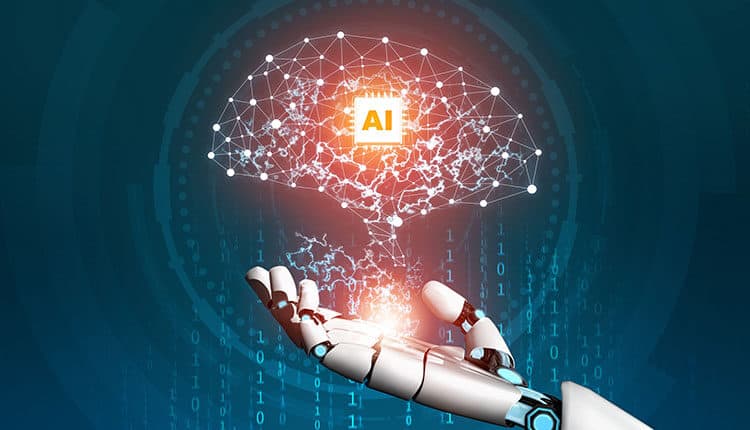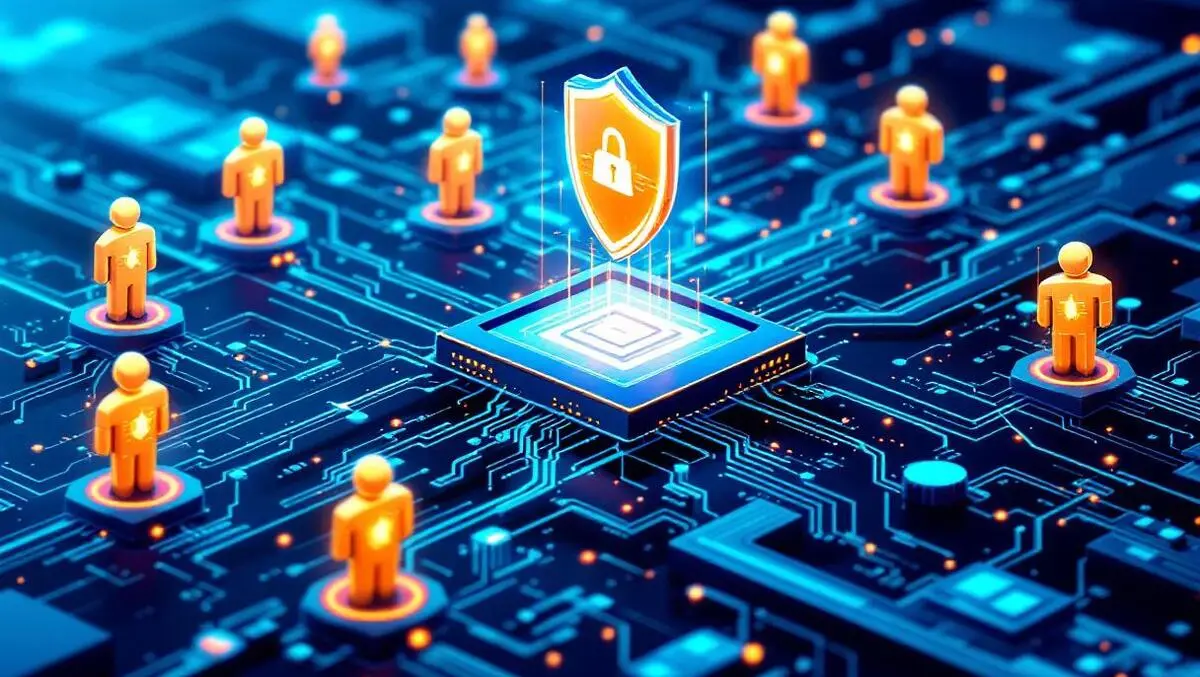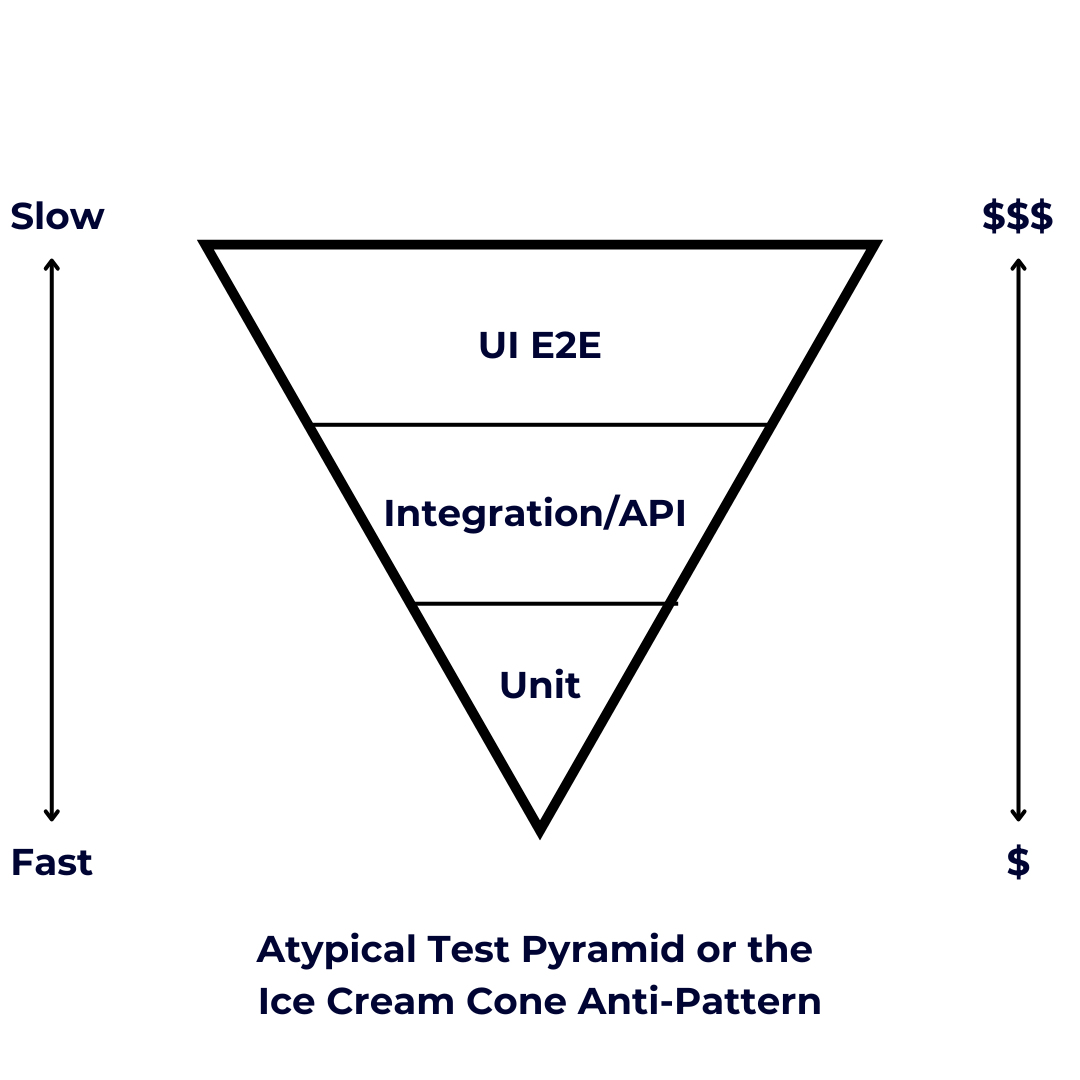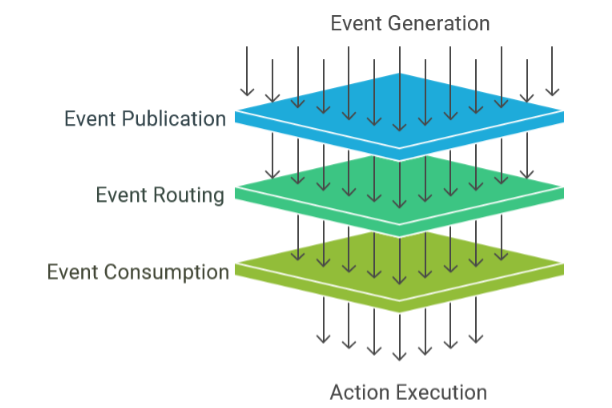Quote for the day:
"Develop success from failures. Discouragement and failure are two of the surest stepping stones to success." -- Dale Carnegie
Digital Debt Is the New Technical Debt (And It’s Worse)
 Digital debt doesn’t just slow down technology. It slows down business
decision-making and strategic execution. Decision-Making Friction: Simple
business questions require data from multiple systems. “What’s our customer
lifetime value?” becomes a three-week research project because customer data
lives in six different platforms with inconsistent definitions. Campaign Launch
Complexity: Marketing campaigns that should take two weeks to launch require six
weeks of coordination across platforms. Not because the campaign is complex, but
because the digital infrastructure is fragmented. Customer Experience
Inconsistency: Customers encounter different branding, messaging, and
functionality depending on which digital touchpoint they use. Support teams
can’t access complete customer histories because data is distributed across
systems. Innovation Paralysis: New initiatives get delayed because teams spend
time coordinating existing systems rather than building new capabilities.
Digital debt creates a gravitational pull that keeps organizations focused on
maintenance rather than innovation. ... Digital debt is more dangerous than
technical debt because it’s harder to see and affects more stakeholders.
Technical debt slows down development teams. Digital debt slows down entire
organizations.
Digital debt doesn’t just slow down technology. It slows down business
decision-making and strategic execution. Decision-Making Friction: Simple
business questions require data from multiple systems. “What’s our customer
lifetime value?” becomes a three-week research project because customer data
lives in six different platforms with inconsistent definitions. Campaign Launch
Complexity: Marketing campaigns that should take two weeks to launch require six
weeks of coordination across platforms. Not because the campaign is complex, but
because the digital infrastructure is fragmented. Customer Experience
Inconsistency: Customers encounter different branding, messaging, and
functionality depending on which digital touchpoint they use. Support teams
can’t access complete customer histories because data is distributed across
systems. Innovation Paralysis: New initiatives get delayed because teams spend
time coordinating existing systems rather than building new capabilities.
Digital debt creates a gravitational pull that keeps organizations focused on
maintenance rather than innovation. ... Digital debt is more dangerous than
technical debt because it’s harder to see and affects more stakeholders.
Technical debt slows down development teams. Digital debt slows down entire
organizations.Rising OT threats put critical infrastructure at risk
 Attackers are exploiting a critical remote code execution (RCE) vulnerability in
the Erlang programming language's Open Telecom Platform, widely used in OT
networks and critical infrastructure. The flaw enables unauthenticated users to
execute commands through SSH connection protocol messages that should be
processed only after authentication. Researchers from Palo Alto Networks' Unit
42 said they have observed more than 3,300 exploitation attempts since May 1,
with about 70% targeting OT networks across healthcare, agriculture, media and
high-tech sectors. Experts urged affected organizations to patch immediately,
calling it a top priority for any security team defending an OT network. The
flaw, which has a CVSS score of 10, could enable an attacker to gain full
control over a system and disrupt connected systems -- particularly worrisome in
critical infrastructure. ... Despite its complex cryptography, the protocol
contains design flaws that could enable attackers to bypass authentication and
exploit outdated encryption standards. Researcher Tom Tervoort, a security
specialist at Netherlands-based security company Secura, identified issues
affecting at least seven different products, resulting in the issuing of three
CVEs.
Attackers are exploiting a critical remote code execution (RCE) vulnerability in
the Erlang programming language's Open Telecom Platform, widely used in OT
networks and critical infrastructure. The flaw enables unauthenticated users to
execute commands through SSH connection protocol messages that should be
processed only after authentication. Researchers from Palo Alto Networks' Unit
42 said they have observed more than 3,300 exploitation attempts since May 1,
with about 70% targeting OT networks across healthcare, agriculture, media and
high-tech sectors. Experts urged affected organizations to patch immediately,
calling it a top priority for any security team defending an OT network. The
flaw, which has a CVSS score of 10, could enable an attacker to gain full
control over a system and disrupt connected systems -- particularly worrisome in
critical infrastructure. ... Despite its complex cryptography, the protocol
contains design flaws that could enable attackers to bypass authentication and
exploit outdated encryption standards. Researcher Tom Tervoort, a security
specialist at Netherlands-based security company Secura, identified issues
affecting at least seven different products, resulting in the issuing of three
CVEs.Why Tech Debt is Eating Your ROI (and How To Fix It)
 Regardless of industry or specific AI efforts, these frustrations seem to boil
down to the same culprit. Their AI initiatives continue to stumble over decades
of accumulated tech debt. Part of the reason is despite the hype, most
organizations use AI — let’s say, timidly. Fewer than half employ it for
predictive maintenance or detecting network anomalies. Fewer than a third use it
for root-cause analysis or intelligent ticket routing. Why such hesitation?
Because implementing AI effectively means confronting all the messiness that
came before. It means admitting our tech environments need a serious cleanup
before adding another layer of complexity. Tech complexity has become a monster.
This mess came from years of bolting on new systems without retiring old ones.
Some IT professionals point to redundant applications as a major source of
wasted budget and others blame overprovisioning in the cloud — the digital
equivalent of paying rent on empty apartments. ... IT teams admit something
that, to me, is alarming: Their infrastructure has grown so tangled they can no
longer maintain basic security practices. Let that sink in. Companies with
eight-figure tech budgets can’t reliably patch vulnerable systems or implement
fundamental security controls. No one builds silos deliberately. Silos emerge
from organizational boundaries, competing priorities and the way we fund and
manage projects.
Regardless of industry or specific AI efforts, these frustrations seem to boil
down to the same culprit. Their AI initiatives continue to stumble over decades
of accumulated tech debt. Part of the reason is despite the hype, most
organizations use AI — let’s say, timidly. Fewer than half employ it for
predictive maintenance or detecting network anomalies. Fewer than a third use it
for root-cause analysis or intelligent ticket routing. Why such hesitation?
Because implementing AI effectively means confronting all the messiness that
came before. It means admitting our tech environments need a serious cleanup
before adding another layer of complexity. Tech complexity has become a monster.
This mess came from years of bolting on new systems without retiring old ones.
Some IT professionals point to redundant applications as a major source of
wasted budget and others blame overprovisioning in the cloud — the digital
equivalent of paying rent on empty apartments. ... IT teams admit something
that, to me, is alarming: Their infrastructure has grown so tangled they can no
longer maintain basic security practices. Let that sink in. Companies with
eight-figure tech budgets can’t reliably patch vulnerable systems or implement
fundamental security controls. No one builds silos deliberately. Silos emerge
from organizational boundaries, competing priorities and the way we fund and
manage projects.
Ready on paper, not in practice: The incident response gap in Australian organisations
The truth is, security teams often build their plans around assumptions rather than real-world threats and trends. That gap becomes painfully obvious during an actual incident, when organisations realise they aren't adequately prepared to respond. Recent findings of a Semperis study titled The State of Enterprise Cyber Crisis Readiness revealed a strong disconnect between organisations' perceived readiness to respond to a cyber crisis and their actual performance. The study also showed that cyber incident response plans are being implemented and regularly tested, but not broadly. In a real-world crisis, too many teams are still operating in silos. ... A robust, integrated, and well-practiced cyber crisis response plan is paramount for cyber and business resilience. After all, the faster you can respond and recover, the less severe the financial impact of a cyberattack will be. Organisations can increase their agility by conducting tabletop exercises that simulate attacks. By practicing incident response regularly and introducing a range of new scenarios of varying complexity, organisations can train for the real thing, which can often be unpredictable. Security teams can continually adapt their response plans based on the lessons learned during these exercises, and any new emerging cyber threats.Quantum Threat Is Real: Act Now with Post Quantum Cryptography
 Some of the common types of encryption we use today include RSA
(Rivest-Shamir-Adleman), ECC (Elliptic Curve Cryptography), and DH
(Diffie-Hellman Key Exchange). The first two are asymmetric types of encryption.
The third is a useful fillip to the first to establish secure communication,
with secure key exchange. RSA relies on very large integers, and ECC, on very
hard-to-solve math problems. As can be imagined, these cannot be solved with
traditional computing. ... Cybercriminals think long-term. They are well aware
that quantum computing is still some time away. But that doesn’t stop them from
stealing encrypted information. Why? They will store it securely until quantum
computing becomes readily available; then they will decrypt it. The impending
arrival of quantum computers has set the cat amongst the pigeons. ... Blockchain
is not unhackable, but it is difficult to hack. A bunch of cryptographic
algorithms keep it secure. These include SHA-256 (Secure Hash Algorithm 256-bit)
and ECDSA (Elliptic Curve Digital Signature Algorithm). Today, cybercriminals
might not attempt to target blockchains and steal crypto. But tomorrow, with the
availability of a quantum computer, the crypto vault can be broken into, without
trouble. ... We keep saying that quantum computing and quantum computing-enabled
threats are still some time away. And, this is true. But when the technology is
here, it will evolve and gain traction.
Some of the common types of encryption we use today include RSA
(Rivest-Shamir-Adleman), ECC (Elliptic Curve Cryptography), and DH
(Diffie-Hellman Key Exchange). The first two are asymmetric types of encryption.
The third is a useful fillip to the first to establish secure communication,
with secure key exchange. RSA relies on very large integers, and ECC, on very
hard-to-solve math problems. As can be imagined, these cannot be solved with
traditional computing. ... Cybercriminals think long-term. They are well aware
that quantum computing is still some time away. But that doesn’t stop them from
stealing encrypted information. Why? They will store it securely until quantum
computing becomes readily available; then they will decrypt it. The impending
arrival of quantum computers has set the cat amongst the pigeons. ... Blockchain
is not unhackable, but it is difficult to hack. A bunch of cryptographic
algorithms keep it secure. These include SHA-256 (Secure Hash Algorithm 256-bit)
and ECDSA (Elliptic Curve Digital Signature Algorithm). Today, cybercriminals
might not attempt to target blockchains and steal crypto. But tomorrow, with the
availability of a quantum computer, the crypto vault can be broken into, without
trouble. ... We keep saying that quantum computing and quantum computing-enabled
threats are still some time away. And, this is true. But when the technology is
here, it will evolve and gain traction.
Cultivating product thinking in your engineering team
 The most common trap you’ll encounter is what’s called the “feature factory.”
This is a development model where engineers are simply handed a list of features
to build, without context. They’re measured on velocity and output, not on the
value their work creates. This can be comfortable for some – it’s a clear path
with measurable metrics – but it’s also a surefire way to kill innovation and
engagement. ... First and foremost, you need to provide context, and you need to
do so early and often. Don’t just hand a Jira ticket to an engineer. Before a
sprint starts, take the time to walk through the “what,” the “why,” and the
“who.” Explain the market research that led to this feature request, share
customer feedback that highlights the problem, and introduce them to the
personas you’re building for. A quick 15-minute session at the start of a sprint
can make a world of difference. You should also give engineers a seat at the
table. Invite them to meetings where product managers are discussing strategy
and customer feedback. They don’t just need to hear the final decision; they
need to be a part of the conversation that leads to it. When an engineer hears a
customer’s frustration firsthand, they gain a level of empathy that a written
user story can never provide. They’ll also bring a unique perspective to the
table, challenging assumptions and offering technical solutions you may not have
considered.
The most common trap you’ll encounter is what’s called the “feature factory.”
This is a development model where engineers are simply handed a list of features
to build, without context. They’re measured on velocity and output, not on the
value their work creates. This can be comfortable for some – it’s a clear path
with measurable metrics – but it’s also a surefire way to kill innovation and
engagement. ... First and foremost, you need to provide context, and you need to
do so early and often. Don’t just hand a Jira ticket to an engineer. Before a
sprint starts, take the time to walk through the “what,” the “why,” and the
“who.” Explain the market research that led to this feature request, share
customer feedback that highlights the problem, and introduce them to the
personas you’re building for. A quick 15-minute session at the start of a sprint
can make a world of difference. You should also give engineers a seat at the
table. Invite them to meetings where product managers are discussing strategy
and customer feedback. They don’t just need to hear the final decision; they
need to be a part of the conversation that leads to it. When an engineer hears a
customer’s frustration firsthand, they gain a level of empathy that a written
user story can never provide. They’ll also bring a unique perspective to the
table, challenging assumptions and offering technical solutions you may not have
considered.Adapting to New Cloud Security Challenges
While the essence of Non-Human Identities and their secret management is acknowledged, many organizations still grapple with the efficient implementation of these practices. Some stumble upon the over-reliance on traditional security measures, thereby failing to adopt newer, more effective strategies that incorporate NHI management. Others struggle with time and resource constraints, devoid of efficient automation mechanisms – a crucial aspect for proficient NHI management. The disconnect between security and R&D teams often results in fractured efforts, leading to potential security gaps, breaches, and data leaks. ... With more organizations migrate to the cloud and with the rise of machine identities and secret management, the future of cloud security has been redefined. It is no longer solely about the protection from known threats but now involves proactive strategies to anticipate and mitigate potential future risks. This shift necessitates organizations to rethink their approach to cybersecurity, with a keen focus on NHIs and Secrets Security Management. It requires an integrated endeavor, involving CISOs, cybersecurity professionals, and R&D teams, along with the use of scalable and innovative platforms. Thought leaders in the data field continue to emphasize the importance of robust NHI management as vital to the future of cybersecurity, driving the message home for businesses of all sizes and across all industries.Why IT Modernization Occurs at the Intersection of People and Data
 A mandate for IT modernization doesn’t always mean the team has the complete
expertise necessary to complete that mandate. It may take some time to arm the
team with the correct knowledge to support modernization. Let’s take data
analytics, for example. Many modern data analytics solutions, armed with AI, now
allow teams to deliver natural language prompts that can retrieve the data
necessary to inform strategic modernization initiatives without having to write
expert-level SQL. While this lessens the need for writing scripts, IT leaders
must still ensure their teams have the right expertise to construct the correct
prompts. This could mean training on correct terms for presenting data and/or
manipulating data, along with knowing in what circumstances to access that data.
Having a well-informed and educated team will be especially important after
modernization efforts are underway. ... One of the most important steps to
IT modernization is arming your IT teams with a complete picture of the current
IT infrastructure. It’s equivalent to giving them a full map before embarking on
their modernization journey. In many situations, an ideal starting point is to
ensure that any documentation, ER diagrams, and architectural diagrams are
collected into a single repository and reviewed. Then, the IT teams use an
observability solution that integrates with every part of the enterprise
infrastructure to show each team how every part of it works together.
A mandate for IT modernization doesn’t always mean the team has the complete
expertise necessary to complete that mandate. It may take some time to arm the
team with the correct knowledge to support modernization. Let’s take data
analytics, for example. Many modern data analytics solutions, armed with AI, now
allow teams to deliver natural language prompts that can retrieve the data
necessary to inform strategic modernization initiatives without having to write
expert-level SQL. While this lessens the need for writing scripts, IT leaders
must still ensure their teams have the right expertise to construct the correct
prompts. This could mean training on correct terms for presenting data and/or
manipulating data, along with knowing in what circumstances to access that data.
Having a well-informed and educated team will be especially important after
modernization efforts are underway. ... One of the most important steps to
IT modernization is arming your IT teams with a complete picture of the current
IT infrastructure. It’s equivalent to giving them a full map before embarking on
their modernization journey. In many situations, an ideal starting point is to
ensure that any documentation, ER diagrams, and architectural diagrams are
collected into a single repository and reviewed. Then, the IT teams use an
observability solution that integrates with every part of the enterprise
infrastructure to show each team how every part of it works together.
Cyber Resilience Must Become The Third Pillar Of Security Strategy
 For years, enterprise security has been built around two main pillars:
prevention and detection. Firewalls, endpoint protection, and intrusion
detection systems all aim to stop attackers before they do damage. But as
threats grow more sophisticated, it’s clear that this isn’t enough. ... The
shift to cloud computing has created dangerous assumptions. Many organizations
believe that moving workloads to AWS, Azure, or Google Cloud means the provider
“takes care of security.” ... Effective resilience starts with rethinking backup
as more than a compliance checkbox. Immutable, air-gapped copies prevent
attackers from tampering with recovery points. Built-in threat detection can
spot ransomware or other malicious activity before it spreads. But technology
alone isn’t enough. Mariappan urges leaders to identify the “minimum viable
business” — the essential applications, accounts, and configurations required to
function after an incident. Recovery strategies should be built around restoring
these first to reduce downtime and financial impact. She also stresses the
importance of limiting the blast radius. In a cloud context, that might mean
segmenting workloads, isolating credentials, or designing architectures that
prevent a single compromised account from jeopardizing an entire environment.
For years, enterprise security has been built around two main pillars:
prevention and detection. Firewalls, endpoint protection, and intrusion
detection systems all aim to stop attackers before they do damage. But as
threats grow more sophisticated, it’s clear that this isn’t enough. ... The
shift to cloud computing has created dangerous assumptions. Many organizations
believe that moving workloads to AWS, Azure, or Google Cloud means the provider
“takes care of security.” ... Effective resilience starts with rethinking backup
as more than a compliance checkbox. Immutable, air-gapped copies prevent
attackers from tampering with recovery points. Built-in threat detection can
spot ransomware or other malicious activity before it spreads. But technology
alone isn’t enough. Mariappan urges leaders to identify the “minimum viable
business” — the essential applications, accounts, and configurations required to
function after an incident. Recovery strategies should be built around restoring
these first to reduce downtime and financial impact. She also stresses the
importance of limiting the blast radius. In a cloud context, that might mean
segmenting workloads, isolating credentials, or designing architectures that
prevent a single compromised account from jeopardizing an entire environment.





































/articles/AI-legacy-modernization/en/smallimage/AI-legacy-modernization-thumbnail-1746528855677.jpg)



